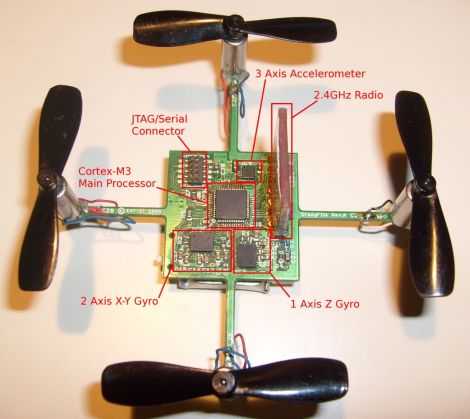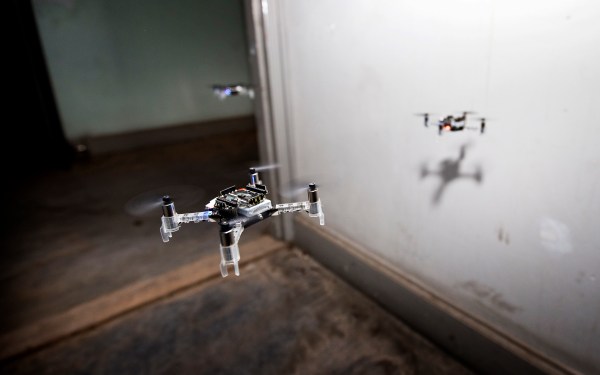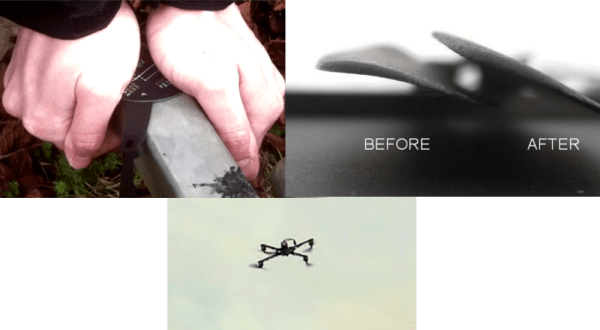
Straight from the Aerospace Controls Laboratory comes a variable-pitch quadrocopter designed by [Mark Cutler] and [Jonathan P. Howe]. While real, full-sized helicopters always have variable pitch rotors, changing the pitch of the blades on remote control aircraft is a fairly uncommon modification. When it’s done right, though, being able to easily change the thrust direction of a propeller leads to very cool flights, like having an airplane hover nose down.
[Mark] and [Jonathan] identified two interesting techniques that a variable pitch quadrotor can bring to the table. The first is trajectory generation – because of the added maneuverability, their quadrotor can perform more aggressive banking turns when following a preprogrammed path. The second benefit to their design is quick deceleration. In the first video after the break, you can compare the deceleration rates of a variable pitch and fixed pitch quadrocopter. While the fixed pitch quad continues climbing after being commanded to stop, the quadrocopter outfitted with variable pitch rotors can stop on a dime.
We’re still waiting for the equivalent of the Red Bull Air Races for quadrocopter builds, but when it comes we know what would win the slalom event.
Continue reading “Variable Pitch Quadrocopter Flies Upside Down”

















